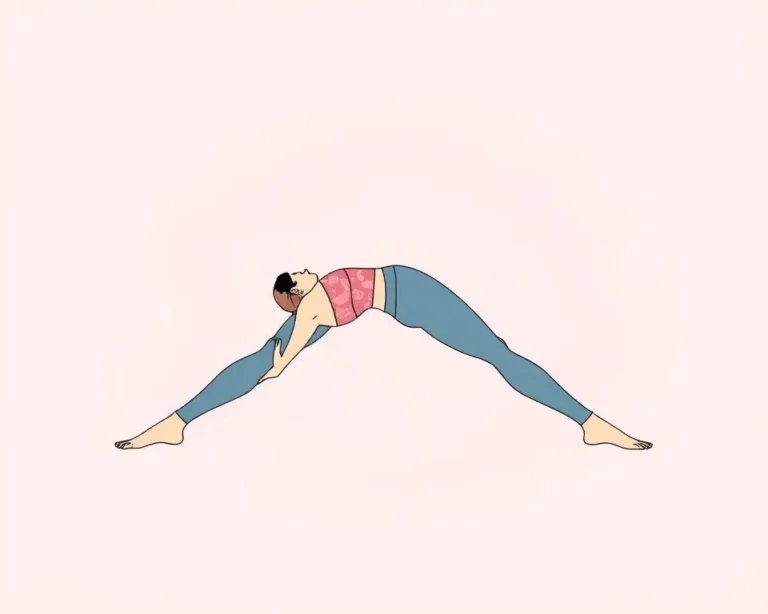Losing belly fat and achieving a flatter tummy is a common fitness goal. According to fitness coach and personal trainer, Sarah Jones, consistency is key. This article will cover her recommended weekly exercise routine that can help you reduce belly fat when combined with a healthy diet.
The Core-Focused Weekly Routine
Sarah Jones, a certified personal trainer with 10 years of experience, highlights the importance of targeting the core muscles to reduce belly fat effectively. Her recommended routine focuses on High-Intensity Interval Training (HIIT) and core-strengthening exercises.
Day 1: HIIT Cardio
HIIT cardio is effective for burning calories and boosting metabolism, which helps reduce overall body fat, including belly fat.
- Warm-up (5 minutes): Light cardio such as jogging in place, jumping jacks, and arm circles.
- Workout (20 minutes): Alternate between high-intensity exercises and short rest periods:
- Burpees (30 seconds): Followed by 30 seconds of rest.
- Mountain Climbers (30 seconds): Followed by 30 seconds of rest.
- Jumping Jacks (30 seconds): Followed by 30 seconds of rest.
- High Knees (30 seconds): Followed by 30 seconds of rest.
- Repeat the circuit 4 times.
- Cool-down (5 minutes): Static stretches, holding each stretch for 30 seconds.
Day 2: Core Strengthening
Core exercises strengthen the abdominal muscles, improving posture and contributing to a toned stomach.
- Warm-up (5 minutes): Dynamic stretches such as torso twists and leg swings.
- Workout (20 minutes):
- Plank (30-60 seconds): Hold a plank position, engaging the core. Repeat 3 times.
- Crunches (15-20 reps): Perform controlled crunches. Repeat 3 times.
- Russian Twists (15-20 reps): Twist from side to side while engaging the core. Repeat 3 times.
- Leg Raises (15-20 reps): Lie on your back and lift your legs. Repeat 3 times.
- Bicycle Crunches (15-20 reps): Alternate elbows to opposite knees. Repeat 3 times.
- Cool-down (5 minutes): Gentle stretches such as lying knee-to-chest stretch.
Day 3: Active Recovery
Active recovery helps reduce muscle soreness and keeps the body moving without intense strain.
- Low-Impact Activity (30 minutes): Choose activities such as walking, yoga, or swimming.
- Walking: A brisk walk in the park.
- Yoga: A gentle session focusing on stretching and relaxation.
- Swimming: Light laps in the pool.
Day 4: Rest
Rest is crucial for muscle recovery and overall progress. Avoid strenuous activities and allow the body to recover.
Day 5: HIIT Cardio
Repeat the HIIT cardio routine from Day 1 to continue burning calories and improving cardiovascular health.
- Warm-up (5 minutes): Light cardio such as jogging in place, jumping jacks, and arm circles.
- Workout (20 minutes): Alternate between high-intensity exercises and short rest periods:
- Burpees (30 seconds): Followed by 30 seconds of rest.
- Mountain Climbers (30 seconds): Followed by 30 seconds of rest.
- Jumping Jacks (30 seconds): Followed by 30 seconds of rest.
- High Knees (30 seconds): Followed by 30 seconds of rest.
- Repeat the circuit 4 times.
- Cool-down (5 minutes): Static stretches, holding each stretch for 30 seconds.
Day 6: Core Strengthening
Repeat the core strengthening routine from Day 2 to further engage and tone the abdominal muscles.
- Warm-up (5 minutes): Dynamic stretches such as torso twists and leg swings.
- Workout (20 minutes):
- Plank (30-60 seconds): Hold a plank position, engaging the core. Repeat 3 times.
- Crunches (15-20 reps): Perform controlled crunches. Repeat 3 times.
- Russian Twists (15-20 reps): Twist from side to side while engaging the core. Repeat 3 times.
- Leg Raises (15-20 reps): Lie on your back and lift your legs. Repeat 3 times.
- Bicycle Crunches (15-20 reps): Alternate elbows to opposite knees. Repeat 3 times.
- Cool-down (5 minutes): Gentle stretches such as lying knee-to-chest stretch.
Day 7: Rest
Another day of rest to allow full muscle recovery and prepare for the next week’s routine.
Additional Tips from Sarah Jones
In addition to the weekly exercise routine, Sarah Jones provides these additional tips for maximizing belly fat loss:
- Diet: Maintain a balanced diet rich in fruits, vegetables, lean proteins, and whole grains. Avoid processed foods, sugary drinks, and excessive saturated fats.
- Hydration: Drink plenty of water throughout the day to stay hydrated and support metabolic functions.
- Sleep: Aim for 7-8 hours of quality sleep each night to regulate hormones and reduce stress levels, which can impact belly fat storage.
- Stress Management: Practice stress-reducing activities such as meditation, deep breathing exercises, or hobbies to lower cortisol levels, which are linked to increased abdominal fat.
- Consistency: Stick to the routine consistently for at least 8-12 weeks to see noticeable results.
- Progress Tracking: Keep track of your progress by measuring your waist circumference and taking photos every few weeks. This helps you stay motivated and adjust your approach as needed.
- Professional Guidance: Consider consulting with a personal trainer or nutritionist for personalized advice and support tailored to your specific needs and goals.
The Importance of a Holistic Approach
Losing belly fat requires a holistic approach that combines targeted exercise with a healthy lifestyle. While the exercise routine recommended by Sarah Jones can be effective, it is most successful when paired with a balanced diet, adequate hydration, sufficient sleep, and effective stress management.
The Role of Diet in Reducing Belly Fat
Diet plays a crucial role in reducing belly fat. Focus on consuming whole, unprocessed foods that are rich in nutrients and low in calories. Here are some dietary recommendations:
- Prioritize Protein: Include lean protein sources such as chicken, fish, beans, and tofu in your diet to help build muscle and increase satiety.
- Eat Plenty of Fiber: Fiber-rich foods such as fruits, vegetables, and whole grains can help you feel full and reduce overall calorie intake.
- Limit Sugar and Processed Foods: Avoid sugary drinks, snacks, and processed foods, as they are often high in calories and low in nutrients.
- Healthy Fats: Incorporate healthy fats from sources such as avocados, nuts, seeds, and olive oil to support overall health and satiety.
Staying Hydrated
Drinking enough water is essential for overall health and can also aid in weight loss. Water helps boost metabolism, suppress appetite, and improve digestion. Aim to drink at least 8 glasses of water per day.
The Impact of Sleep and Stress
Lack of sleep and high stress levels can contribute to increased belly fat. When you are sleep-deprived or stressed, your body produces more cortisol, a hormone that can promote fat storage in the abdominal area.
- Prioritize Sleep: Aim for 7-8 hours of quality sleep each night. Create a relaxing bedtime routine and ensure your sleep environment is dark, quiet, and cool.
- Manage Stress: Practice stress-reducing activities such as meditation, yoga, or spending time in nature.
Conclusion
Achieving a flatter tummy and reducing belly fat requires a combination of targeted exercise and a healthy lifestyle. Sarah Jones’s recommended weekly exercise routine, which includes HIIT cardio and core strengthening exercises, can be an effective tool when combined with a balanced diet, adequate hydration, sufficient sleep, and effective stress management. Consistency and a holistic approach are key to achieving your fitness goals and maintaining long-term results. By following these guidelines and staying committed to your health, you can achieve a flatter tummy and improve your overall well-being.







